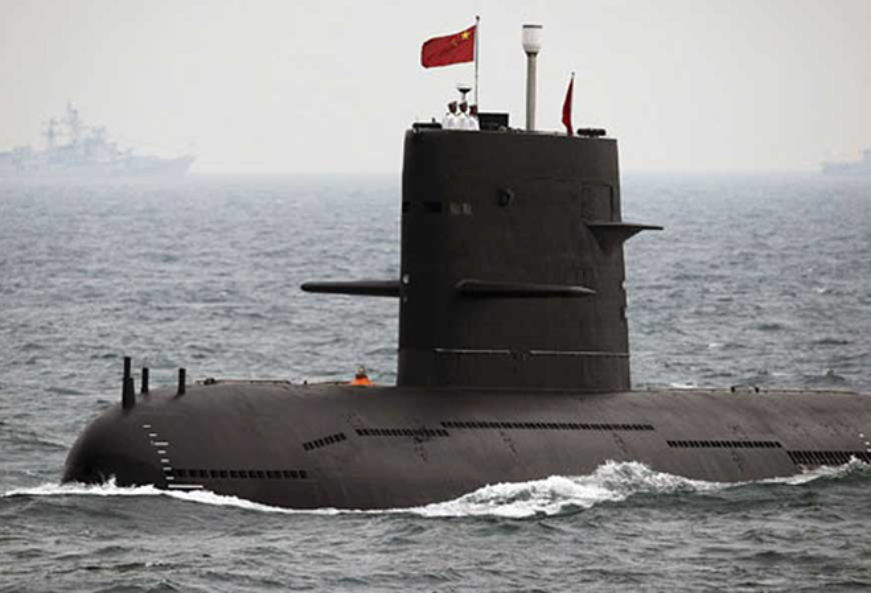
This is the 149th in the series–The China Chronicles.
In the last few years, China has been instrumental in developing the underwater naval capacities of a number of the littoral countries outlining the Bay of Bengal. Most recently, it helped construct the BNS Sheikh Hasina-Bangladesh’s first submarine base, worth US$1.2 billion, at Pekua in the Cox’s Bazaar district of Chittagong, which was inaugurated in March 2023. It is built with the capacity to dock six submarines and eight warships simultaneously, as a part of Bangladesh’s ‘Forces Goal 2030’, to expand and modernise the country’s defences. At present, it will station Dhaka’s two submarines, BNS Navajatra and BNS Joyjatra, also acquired from Beijing, six years ago in 2017. In 2021, China delivered a Type 035 or Ming class diesel-electric attack submarine, formerly used by the People’s Liberation Army Navy (PLAN), to Myanmar.
The growing unease in Thai society, about an overt reliance on China culminating in its growing strategic influence, especially after witnessing the Hambantota case in Sri Lanka, may have also led to the reduced deal.
Thailand had also agreed to purchase three submarines from Beijing in 2017, for the price of two, along with an extended quality guarantee, communications, combat systems and training programmes for the Thai personnel. However, the order was reduced to one submarine, as the Thai government faced criticisms from the Opposition and its populace for its exorbitant defence expenditure in the face of the pandemic’s detrimental impact on the Thai economy. The growing unease in Thai society, about an overt reliance on China culminating in its growing strategic influence, especially after witnessing the Hambantota case in Sri Lanka, may have also led to the reduced deal. Currently, the single order is also in jeopardy as a German company appointed to provide a propulsion system necessary for the submarine has stated its inability, owing to Germany’s limited defence export to China, following the European Union (EU) embargo. Subsequently, the Thai Opposition has proposed that scrapping the deal would be in the country’s best interests. Indeed, these submarine deals with Bay littorals, have sparked much contemplation about Beijing’s intentions in these waters, especially as India is also trying to develop the submarine capacities of its Eastern Naval Command to better secure the Bay, which it considers to be one of its ‘primary areas of interest’.
China’s interest in the Bay
Sino-Indian competition has been one of the defining features of the Bay of Bengal’s strategic resurgence in recent years, as India tries to retain its prominence as a resident power, in the face of China’s deepening footprint in the region. In a future riddled with energy uncertainty, the lure of the Bay is undeniable for Beijing, as not only is the maritime space home to a vast repository of hydrocarbons, but it is also traversed by important sea lanes of communication, that are used to ferry critical energy imports from the Middle East to the countries of East Asia. Most important among these, is the East-West shipping route, which passes along eight nautical miles below India’s Andaman and Nicobar Islands in the Bay, before entering the chokepoint of the Strait of Malacca, connecting Europe and Africa with Asia. The Bay’s proximity to the Strait of Malacca is one of the cardinal reasons for China’s interest in this maritime space as it suffers from the “Malacca Dilemma”. This refers to Beijing’s apprehensions about any blockages in this narrow chokepoint, which would hinder the passage of almost 80 percent of its imports, thereby negatively affecting the country. Consequently, China wants to maintain a strong presence in the Bay to ensure that its energy supply remains uninterrupted and thereby its growth unfettered. Accordingly, it is keen to strengthen ties with the Bay littoral countries, a manifestation of which is the submarine deals.
The Bay’s proximity to the Strait of Malacca is one of the cardinal reasons for China’s interest in this maritime space as it suffers from the “Malacca Dilemma”.
Developing the under-sea leg of Bay littorals- What’s the byline for Beijing?
Indeed, as rapidly growing economies, most countries belonging to this region, are intent on expanding their defence capacities and are therefore attracted to purchase Chinese naval crafts as these are competitively priced. The acquisition of the submarines has allowed the Bangladesh Navy in particular to become a ‘three-dimensional force’, by adding the under-sea leg, to the pre-existing surface-level operations and naval aviation wing. Dhaka’s agenda is to not only become self-reliant in protecting its sovereignty as well as its sizeable maritime resources but also to play a leading role in furthering regional security. In a way, this will complement India’s efforts to maintain security and stability in the Bay of Bengal, as it undertakes coordinated patrols with Bangladesh and the latter also participates in India’s multilateral naval exercise- MILAN, that is held in this maritime space. However, there is also a cause of concern for India, as the possible operation of Bangladesh’s submarines by Chinese sailors, brings them near India’s Exclusive Economic Zones (EEZs) in the Bay, thereby providing Beijing with an opportunity to gather more information to aid Chinese submarine operations in the region.
The Coco Islands, are also located close to India’s Andaman and Nicobar Islands where the Army, Navy and Airforce integrated, serve as the country’s Far Eastern Tri-command.
It is important to note here that, China’s request to dock submarines in Sri Lanka, was declined in 2017 by the island nation as it prepared to welcome the Indian Prime Minister Narendra Modi on his official visit. The refusal came as a sign of Sri Lanka’s solidarity with India, especially as in 2014, Colombo’s decision to harbour a Chinese submarine had sparked fierce opposition from India given its apprehension of China’s growing activity, in its area of interest. However, a rise in the docking of submarine tender ships in Sri Lankan ports, suggests the presence of PLAN submarines in Sri Lanka's near-seas, particularly for the collection of hydrological and bathymetric data and the training of submarine crews. Since 2019, PLAN survey ships such as the Xiang Yang Hong 03 have surveyed the deep waters of the Bay of Bengal for better submarine operations. In a recent development, it has also been reported by the Indian media that China is allegedly building monitoring and surveillance facilities at Myanmar’s Coco Islands in Bay, from where it can track India’s missile launches off the Balasore test range in Odisha, as well as the movements of India's first nuclear submarine stationed at the Rambili naval base, 50 km south of Visakhapatnam on the country’s eastern seaboard. The Coco Islands, are also located close to India’s Andaman and Nicobar Islands where the Army, Navy and Airforce integrated, serve as the country’s Far Eastern Tri-command. However, the Myanmar junta government has denied claims of Chinese involvement in the Coco Islands and dismissed India’s apprehensions.
A cautionary for India
China’s proactive presence in South Asia has undoubtedly complicated the situation for India, especially since its underwater naval capacities are yet to be optimally developed. Observers maintain that the deficit between the Indian and the Chinese navies is exceptionally stark in the undersea domain, as there continue to be asymmetries in the budget and warship-building capacities of the two countries. Despite the induction of five Scorpene (Kalvari) class submarines, the Indian Navy continues to be eight boats short of the 24 that were scheduled for induction by 2030, as per the Navy’s 2012–27 Maritime Capability Perspective Plan. The older Kilo and HDW/Shishumar class boats are also still pending their decommissioning. Beyond military capacity building, the need for underwater domain awareness is also more than ever before, for India to be truly cognizant of Chinese activities in the Bay. In 2019, India Today reported, that a Chinese maritime research and survey ship had been spotted carrying out research activities, in India’s EEZ near the Andaman and Nicobar Islands without its consent. Seemingly, the vessel could have been used “to monitor all underwater and surface vessels of the Indian Navy stationed in the region.” This marks a violation, not only of India’s legislation (Act No. 80/1976) “that requires foreign marine scientific vessels to seek licence before undertaking activities,” but also of the 1982 United Nations Convention on the Laws of the Sea (UNCLOS), which makes it necessary for countries to abide by the laws of the coastal state to which the EEZ belongs (Part V, Article 58). The UNCLOS also prohibits foreign marine scientific research and hydrographic survey ships undertaking transit passage through straits that are used for international navigation between one part of an EEZ to another, from carrying out any research or survey without the prior authorisation of the necessary coastal state (Section 2, Article 40), This was consistent with the Indian Navy’s statement at that time; “if you have to do anything in our EEZ, you have to notify us and take permission.” In its defence, China maintained that it was only taking innocent passage through the Indian EEZ, which the UNCLOS permits.
Beyond military capacity building, the need for underwater domain awareness is also more than ever before, for India to be truly cognizant of Chinese activities in the Bay.
While Beijing claims that its surveys serve global scientific research, the purpose may well be to gauge the operational conditions for its submarine activity or detect anti-submarine warcraft. The need of the hour for India is therefore three-fold; first, to expedite the development of its underwater naval capacities; second, to enhance defence cooperation with other Bay littorals, to ascertain that their resources and territories are not used for purposes that are detrimental to India’s security; and lastly, to devise measures to improve its underwater domain awareness, such as developing the surveillance capacities in the Andaman Nicobar Islands, overlooking the Strait of Malacca. This will help identify Chinese submarines passing through it into the Bay of Bengal, as the vessels will have to surface for safe navigation due to the shallow depth of the chokepoint. It is promising to note that the Indian Ministry of Defence has already designed a military acquisition initiative, Project 75-I, for the planned procurement of diesel-electric submarines for the Indian Navy, and is also drawing up “a plan for the indigenous construction of nuclear attack submarines.” These endeavours need to be realised and implemented with alacrity.
Sohini Bose is an Associate Fellow with the Strategic Studies Programme at the Observer Research Foundation.
The views expressed above belong to the author(s). ORF research and analyses now available on Telegram! Click here to access our curated content — blogs, longforms and interviews.




 PREV
PREV


